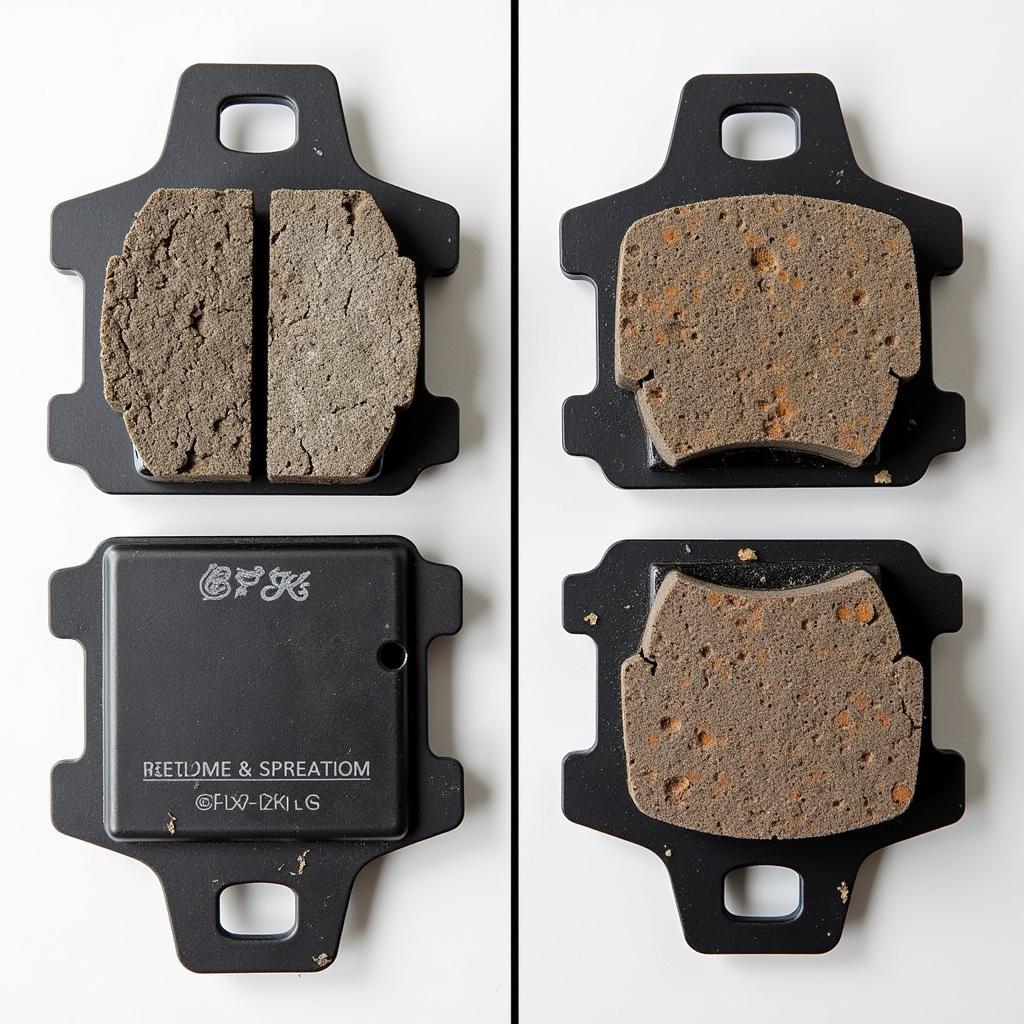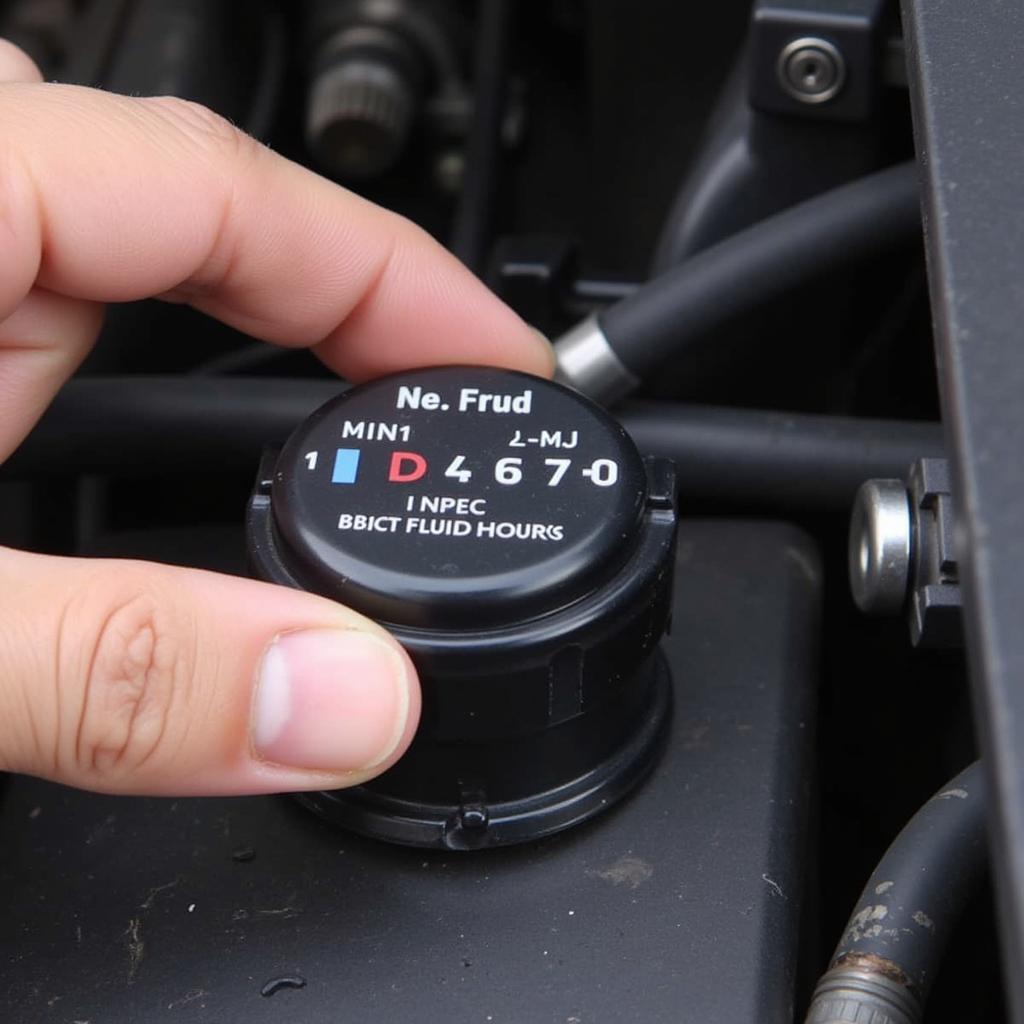The brake pad warning light on your E30 BMW is a crucial safety feature that alerts you to potential issues with your braking system. Ignoring this light can lead to further damage and compromise your ability to stop safely. This comprehensive guide will walk you through understanding the warning light, diagnosing the problem, and exploring the solutions.
Understanding Your E30’s Brake Warning Light System
The E30, like most vehicles, uses a straightforward system to monitor brake pad wear. Here’s a breakdown:
- Sensor: A wear sensor, essentially a small wire embedded within the brake pad material, is positioned to make contact with the brake rotor when the pad wears thin.
- Circuit: This sensor is part of a simple electrical circuit. When the pad wears down and the sensor touches the rotor, it completes the circuit.
- Warning Light: Completing the circuit triggers the brake pad warning light on your dashboard, a clear signal that it’s time for new brake pads.
Common Causes of an Illuminated Brake Pad Warning Light
While worn brake pads are the most common culprit, other issues can trigger the warning light on your E30:
- Worn Brake Pads: As explained, this is the most frequent cause.
- Damaged Sensor Wire: The sensor wire itself can become broken or damaged, leading to a false positive.
- Faulty Wiring: Issues within the wiring harness, like corrosion or a loose connection, can disrupt the circuit.
- Low Brake Fluid: While a separate warning light typically indicates low brake fluid, a severe drop in brake fluid level can sometimes trigger the brake pad warning light. This situation requires immediate attention.
Diagnosing the Problem: A Step-by-Step Guide
Follow these steps to pinpoint the cause of the illuminated warning light:
- Check Brake Fluid Level: Locate the brake fluid reservoir (consult your owner’s manual if needed) and check the fluid level. If it’s significantly low, there might be a leak, and you should seek professional help.
- Inspect Brake Pads: If the brake fluid level is adequate, it’s time to inspect the brake pads themselves. You’ll likely need to remove a wheel to get a clear view (refer to your owner’s manual for wheel removal procedures).
- Sufficient Pad Material: If the brake pads have ample material remaining, the problem likely lies with the sensor or wiring.
- Worn Brake Pads: If the brake pads appear thin, it’s time for a replacement.
 Worn Brake Pads on E30
Worn Brake Pads on E30
Solutions: Addressing the Root Cause
- Brake Pad Replacement: If your inspection reveals worn brake pads, replacement is essential for safe braking performance. While this can be a DIY job for experienced individuals, seeking professional service ensures proper installation and quality parts.
- Sensor and Wiring Inspection: If the brake pads are in good condition:
- Carefully examine the sensor wire for any visible damage.
- Check the wiring harness leading to the sensor for any loose connections or signs of corrosion.
Beyond the Warning Light: Additional Brake System Considerations
- Brake Fluid Flush: BMW recommends a brake fluid flush every two years. Fresh brake fluid maintains optimal braking performance and prevents corrosion within the system.
- Brake System Inspection: Regular brake system inspections, ideally during oil changes or annual maintenance, can identify potential issues before they escalate.
Expert Insight
“Don’t underestimate the importance of your E30’s braking system,” advises master BMW technician, Hans Schmidt. “Addressing brake issues promptly not only ensures your safety but also prevents more costly repairs down the line.”
Conclusion: Prioritizing Your E30’s Braking System
The brake pad warning light on your BMW E30 is a signal that should never be ignored. By understanding its function, diagnosing the problem, and taking appropriate action, you can maintain optimal braking performance and ensure a safe driving experience. Remember, regular maintenance and timely repairs are key to keeping your E30 on the road for years to come.
FAQs about E30 Brake Pad Warning Lights
Can I drive my E30 with the brake pad warning light on?
It’s strongly discouraged. While you might retain some braking ability, driving with worn brake pads is extremely dangerous and can lead to accidents.
How much does it cost to replace brake pads on an E30?
The cost varies depending on factors like the type of brake pads used and labor rates. On average, expect to pay between $150 to $300 for parts and labor.
Can I replace just one brake pad, or should I replace them in pairs?
It’s best practice to replace brake pads in axle pairs (both front or both rear) to ensure even braking performance.
How often should I check my E30’s brake pads?
It’s a good habit to visually inspect your brake pads every 10,000 miles or during regular maintenance checks.
What happens if I ignore the brake pad warning light for too long?
Ignoring the warning light can lead to severe brake damage, including rotor damage, caliper failure, and ultimately, brake failure, putting you at serious risk.

